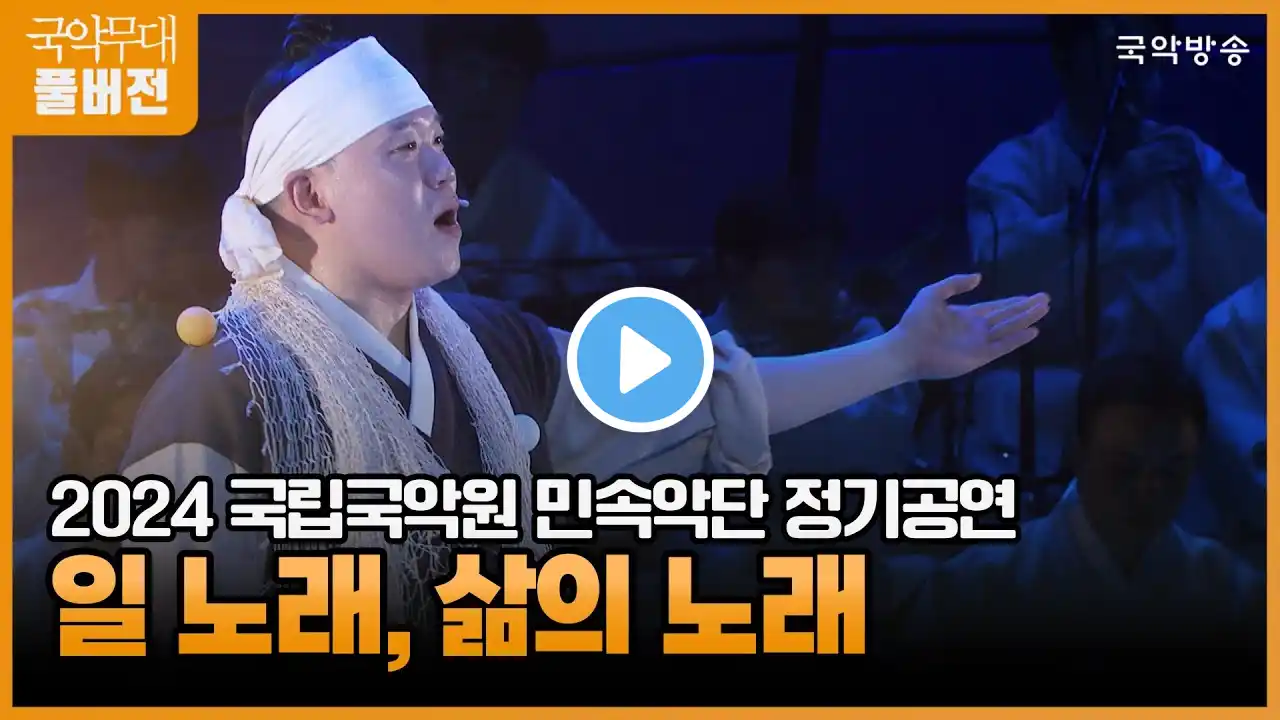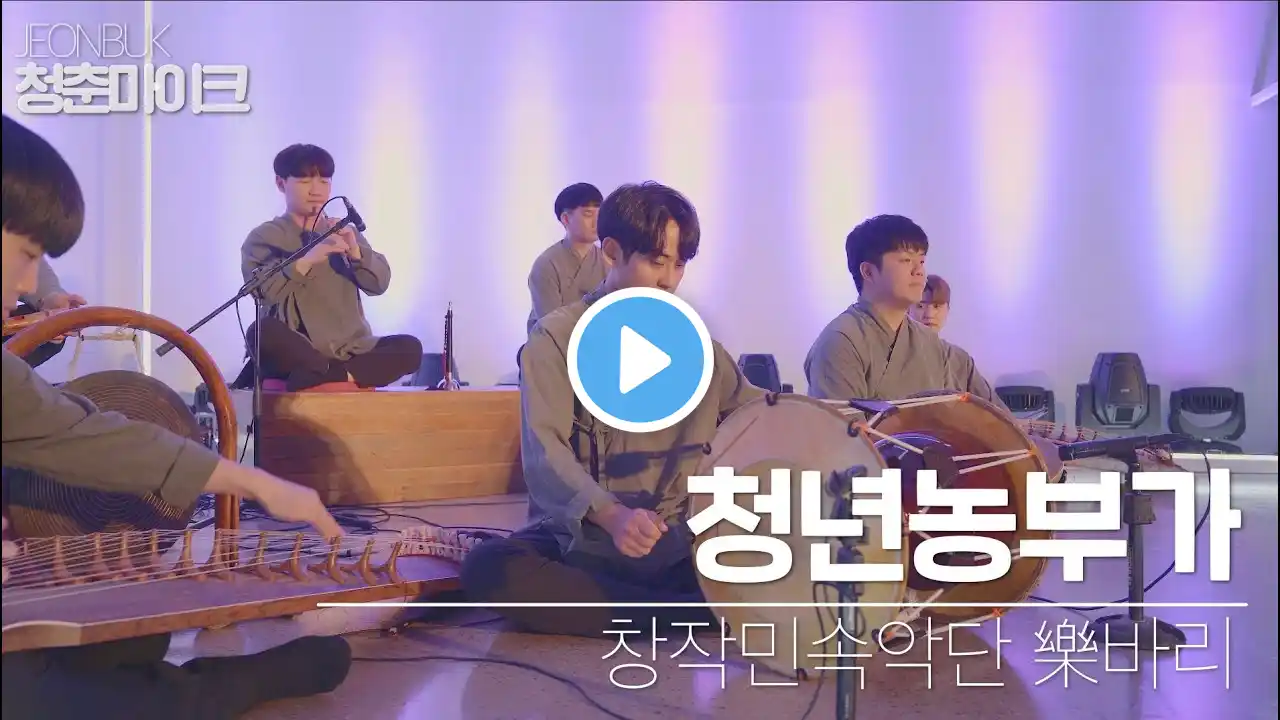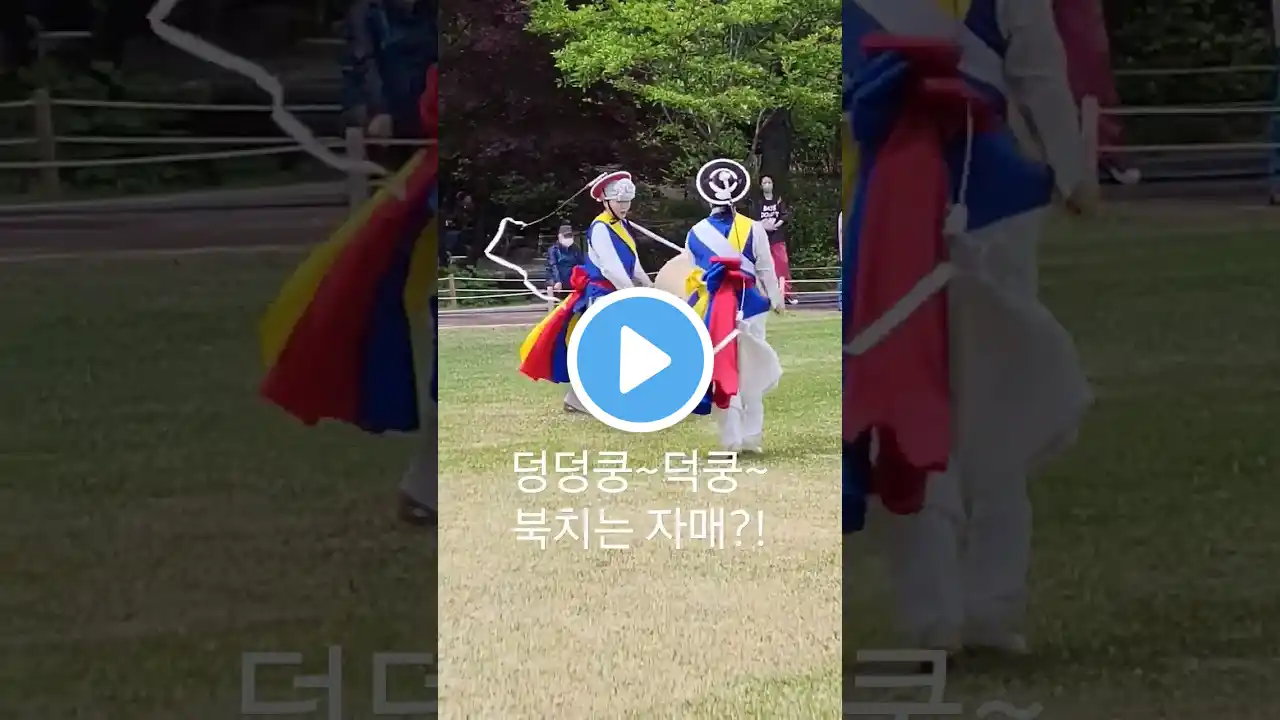![[민속악단] 민속악, 그 다채로움](https://krtube.net/image/wT0FKGWYzyc.webp)
[민속악단] 민속악, 그 다채로움
“몸에 스민 예술, 삶에 녹인 전통” 본 영상은 국립국악원 개원 70주년을 기념하여 국립국악원 소속 예술단의 정체성과 예술 세계를 조명하고, 나아가 무대에 펼쳐지는 주요 레퍼토리들을 소개하기 위해 제작되었습니다 “민속악, 그 다채로움” 산조합주, 판소리, 경기민요, 서도민요, 판굿 등의 음악을 중심으로 민속악단의 다양한 공연 레퍼토리를 매시업한 영상이다 K-pop 뮤직비디오에서 자주 사용되는 화면 전환, 음향 기법을 활용하여 각 레퍼토리가 하나로 이어지되 다채로워 보일 수 있도록 하였다 “Arts absorbed into our body, tradition melted into our life” In commemoration of 70th anniversary of National Gugak Center, this video has been produced in order to show the identity and artistic world of arts company belonging to National Gugak Center and further introduce the main repertoires to be shown on the stages "(Folk Music Group) Folk Music, its diversity" By taking advantage of the technologies such as screen conversion and sound linking technique through objects which we could watch from K-pop music videos, this video of National Gugak Center has the repertoires produced in a way that they are naturally linked to each other to express a diversity of music rather than separate ones ---------- 00:00 〈민속악, 그 다채로움〉 시작 00:05 산조합주 “Sanjo” Ensemble 산조합주는 ‘민속기악 독주의 꽃’이라 할 수 있는 산조를 합주 형태로 재구성하여 무대작품화 한 것이다 산조의 악기별, 유파별 특징이 반영된 선율위에 개별 악기들의 독특한 음색이 추가되면서 합주음악으로서의 특징과 음악의 완성도를 끌어올렸다 민속악에서 제공하는 자유로운 즉흥성과 풀고 맺음의 긴장감이 절묘하게 배합된 기악합주곡이다 “Sanjo Hapju”(Sanjo Ensemble) is a rearrangement of “sanjo” by an ensemble for a stage work which is considered 'the blossom of the folk instrumental music' The audience could find it stylish and have a sense of stability by the collective performance, unlike the solitary performance 01:29 대풍류 “Daepungnyu”(Wind Ensemble) 대풍류(竹風流)는 대나무로 만든 대금, 피리 등 관악기가 중심이 되는 음악이다 현악기 중심의 ‘줄풍류(줄風流)’에 대비되는 연주형태이다 “Daepungnyu” is a type of ensemble music focused on wind instruments made of bamboo Its playing style is in contrast to “Julpungnyu” which is based on string instruments 02:03 가야금병창 Gayageum Byeongchang 20세기 초 무렵 국악의 독립적인 장르로 형성된 가야금병창은 가야금을 연주하면서 노래를 하는 연주형태이다 가야금병창은 가야금 연주기량과 노래실력이 동시에 뛰어나야 한다 Formed as an individual genre of gugak in the early 20C, gayageum byeongchang is a style of performing in which the performers sing and play gayageum simultaneously 02:30 판소리 Pansori (심청가 중 ‘범피중류’) 판소리는 2003년 유네스코 인류무형문화유산으로 등재되었다 판소리는 소리를 하는 소리꾼과 북을 치는 고수, 그리고 추임새로 화답하는 관객이 핵심요소이다 소리꾼은 부채 또는 손수건을 소품으로 이용하며, 발림(몸동작)을 할 때, 상황을 설명하는 도구로 활용된다 고수는 반주자의 역할 뿐만 아니라 소리의 완급을 조율하는 기능도 담당한다 The key components of pansori are a vocalist, who is in charge of singing and storytelling (sori), a drummer (gosu), and the audience who would reciprocate with exclamatory words (chuimsae) The vocalist utilizes a fan or a hankerchief when narrating or making mimetic gestures (ballim) 03:03 경기소리 Gyeonggi Minyo(이별가) 서울과 경기지역을 중심으로 전승된 경기민요는 발음이 정확하고, 선율이 화려하고, 경쾌한 느낌을 선사하는 노래이다 창법은 급격한 변화는 없으나, 부드럽고 유장한 가사 전달이 듣는 이로 하여금 흥겨움과 서정미를 느끼게 만든다 Transmitted in Seoul and Gyeonggi province, Gyeonggi minyo presents precisely pronunced lyrics, colorful melodies, and cheerful rhythms Although it has no radical change in its singing style, it makes the audience feel lyrical sentiment as well as excitement due to the soft and fluent conveyance of the lyrics 03:31 서도소리 Seodo minyo(배따라기) 서도민요는 한반도 서북쪽의 평안도와 황해도와 같은 이북지역 민요를 말한다 독특한 창법과 굵고 격하게 떠는 등 특유의 시김새를 가지고 있다 수심가 토리로 이루어져 구성지고 구슬픈 느낌을 주면서도 힘찬 기백을 느끼게 하는 특징이 있다 “Seodo minyo” refers to the folk songs from Pyeongan and Hwanghae provinces, the northwest regions of the Korean peninsula It has a unique singing style and characteristic embellishment such as a strong vibrato On the “susumiga-tori”, the mode and scale that reflects the locality of the Seodo singing style, “Seodo minyo” emits a sorrowful yet powerful feeling 03:56 판소리 Pansori(심청가 중 ‘심청이 인당수 빠지는 대목’) 04:23 판굿 Pangut 농악은 2014년 유네스코 인류무형문화유산으로 등재되었다 농악은 농경사회에서 마을 공동체의 번영과 안녕을 기원하기 위해 펼쳐졌다 타악기 연주와 춤 그리고 연극적인 요소까지 가미된 종합예술의 결정체이다 지역마다 지리적 환경과 참여자의 구성에 따라 다양하게 발달한 농악은 공동체의 유대를 강화하고, 문화 창의성 발달에 기여하였다 판굿은 판놀음에서 솜씨를 선보이는 농악의 일종이다 “Nognak”(Community Band Music, Dance, and Rituals) was designated as World Intangible Cultural Heritage of Humanity by UNESCO in 2014 It was performed in the agrarian communities to pray for the prosperity and well-being of village communities Developed in various forms by its geological backgrounds and its participants, “nongak” contributed to strengthening the bonds in communities and developing cultural creativity ---------- ❤[정악단] “정악, 인생을 담아낸 울림” 영상 보러가기❤ Go to watch "Court Music Orchestra" video 👉 💛[무용단] “전통의 언어, 우리의 몸짓” 영상 보러가기💛 Go to watch "Dance Theater" video 👉 💚[창작악단] “일상 곳곳에, 우리 음악” 영상 보러가기💚 Go to watch "Contemporary Gugak Orchestra" video 👉 ---- 주최: 국립국악원 출연: 국립국악원 민속악단 촬영 및 제작: 투와이드컴퍼니 작곡 및 음악감독: 김백찬 Organized by: National Gugak Center Led by: National Gugak Center – Folk Music Group Filmed and produced: TooWide Company Composed and music directed by: Kim Baek-chan

















